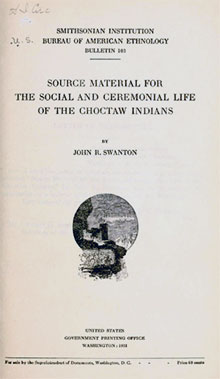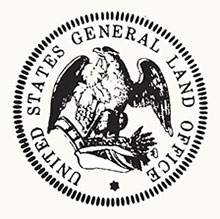The Original United States Surveys
Of particular note the surveyors were paid by the mile. They made notes of their activities on each mile surveyed. They surveyed to a standard. As a minimum the Homeland surveyors noted water features: swamps, creeks, rivers, etc. Also as a standard, the surveyors set two posts: the quarter section and end of section corner post. For each post the surveyors recorded witness trees. Each witness tree was noted by type, usually diameter, and bearing and distance to post. Another standard was to add general, brief notes about the soil, trees types and topography. There was no additional payment to note other features such as Indian paths, fields, houses, or villages.
The surveyors also produced a survey plat or drawing of the township. The survey plats, survey notes and related documents such as early land owners are available through the Bureau of Land Management GLO website. The survey notes were written in cursive and abbreviated. We used these documents to locate Choctaw villages. We will explain their use and value as we progress.
BAE No. 103
 The Bureau of American Ethnology (BAE) was a government organization responsible for transferring records and materials regarding the Indians of North America from the Interior Department to Smithsonian Institution. The BAE printed annual reports and bulletins among other documents. Their publication most concerning the Choctaw villages' names and geographical grouping is the Bureau of American Ethnology Bulletin No 103 Source Material for the Social and Ceremonial Life of the Choctaw Indians, John R. Swanton, Government Printing Office, Washington D. C. 1931 courtesy of Smithsonian Institution. The reader's interest relative to the Choctaw villages begins book page 55 and extends through page 75. Right click to rotate the tables. These tables attempt to associate the varied spellings of the Choctaw villages.
The Bureau of American Ethnology (BAE) was a government organization responsible for transferring records and materials regarding the Indians of North America from the Interior Department to Smithsonian Institution. The BAE printed annual reports and bulletins among other documents. Their publication most concerning the Choctaw villages' names and geographical grouping is the Bureau of American Ethnology Bulletin No 103 Source Material for the Social and Ceremonial Life of the Choctaw Indians, John R. Swanton, Government Printing Office, Washington D. C. 1931 courtesy of Smithsonian Institution. The reader's interest relative to the Choctaw villages begins book page 55 and extends through page 75. Right click to rotate the tables. These tables attempt to associate the varied spellings of the Choctaw villages.
Swanton was familiar with Halbert's Papers, the Journals of Regis du Roullet and Joseph Christophe de Lusser.
